
Stablecoins are blockchain-native digital representations of a financial asset, such as money or gold. This article discusses stablecoins as they are most commonly understood; as cryptocurrencies whose value is tied to a common currency, such as the Euro or the US Dollar. Before delving into stablecoins, it’s good to take a few steps back to understand why the need for stablecoins has emerged...
An extremely brief history of money
Most often, money is defined as a medium of exchange. That is, money needs to be something I can pay you with and that I can accept as payment for something I give to you.
Before we had money like we have today, humans used to barter; we exchanged goods or services for other goods and services. If I had apples and you had timber, we could exchange them to make both of us better off.
Over time, as economies and societies grew, we chose to simplify the movement of value by abstracting value to accounting units such as shells, limestone disks, or gold grains. With this social understanding of a common unit of account, or a money, we didn’t need to find any specific person who would be on the other side of our barter. Instead, we could use the money to reach a consensus on how much one thing would be worth in terms of another.
To make it even more convenient to transfer value, we invented coins. Coins were usually “backed” by some amount of precious metal, such as silver. Entrepreneurial persons have found ways to make money out of thin air for as long as there has been money. One example of such a method is clipping, where metal is shaved off the edges of the coin to make new coins. This led to coin debasement – a divergence between the stated value of the coin and its intrinsic value (value of the metals in the coin).
Governments, especially those of warring nations, also found that coin debasement was a great way to increase their runway at no apparent cost. By inflating the amount of money in circulation, they could pay for their conquests and exploits without having to back the coin with more metals. Over the centuries, coin debasement has contributed to the fall of major empires, such as Rome.
Today, the US Dollar dominates world trade, and it is a commonly accepted medium of exchange and unit of account. While the dollar was initially backed by gold, President Nixon announced in 1971 that the dollar would no longer be convertible to gold at a fixed value. Today’s money is no longer backed by precious metals or other assets of intrinsic value. These types of money are known as fiat currencies – currencies that are not backed by any asset.
To ensure the stability of money and maintain the social consensus of fiat as the base money, the world’s governments employ central banks to plan financial policies and ways to distribute money. With this centralised function at the heart of modern money, it is crucial that banks and financial institutions cooperate closely with central banks. They can’t make mistakes that could lead to the creation of unauthorised money from thin air.
The emergence of digital money
Over the last decades, the globe has become increasingly connected thanks to transport, communications, and other technological achievements. This globalisation has also led to the emergence of a need for fast & global financial settlement systems – systems for moving money internationally.
Before the Internet, various credit systems and physical movements of cash and other assets were used to facilitate trade across borders. To improve the systems in the pre-Internet age, SWIFT (Society for Worldwide Financial Telecommunication) was set up in 1973 to improve financial messaging. Various other international counterparts, such as the US ACH Network, were set up to improve the processing of financial transactions around the same time.
The pre-Internet technologies have been heavily applied to today’s financial transactions; SWIFT still processes in excess of 42 million transaction instructions per day. (1) Unfortunately, the use of legacy systems that were not designed to support modern transaction volumes imposes high costs globally. We estimate that the global payments market alone imposes a tax of 2 trillion euros annually paid to financial intermediaries. (2) The market is ripe for dislocation and application of modern technologies.
FinTechs, or technology companies working in the financial services sector, have already shown great potential in disrupting the market with various digital money. New and emerging technologies have allowed FinTechs to avoid mistakes related to the creation of unauthorised money. For example, e-money institutions such as EUROe issue digitally native money that is backed 1:1 with traditional financial reserves. Modern technology helps decrease costs associated with financial transactions while also making them faster and more secure.
Stablecoins – an evolutionary step for digital money
Blockchains are an emerging technology used to record data in an uncancellable manner. Once a data point, or a transaction in the remit of payments, is sent to and confirmed on a blockchain, it cannot be undone. Any participant in the blockchain can view and verify the transaction’s authenticity. By clever economic incentive design, blockchains enable all this without having to trust anyone else.
Applying blockchains to digital money has led to the emergence of stablecoins – the next logical evolutionary step in the development of money. Due to the properties of blockchains, they are incredibly well-suited for processing financial transactions. Blockchains form a reliable & secure global network for near real-time settlement at low cost without the need to trust any single intermediary or party. Furthermore, blockchains can ensure that unauthorised money is not created from thin air while keeping the global monetary system easily auditable and improving central bank and commercial bank operations.
However, not all stablecoins are created equal. In common parlance, stablecoins usually refer to one of the three types of stablecoins; fiat-backed, crypto-backed, or algorithmic stablecoins. Let’s go over each of them.
Fiat-backed stablecoins
The largest stablecoins in the market are fiat-backed. Fiat-backed stablecoins are money on a blockchain-backed by deposits in a bank. Most often, they are backed 1:1, i.e., 1 euro is worth 1-euro stablecoin, 2 euro is worth 2-euro stablecoins, and so forth. Every stablecoin in circulation has at least the same amount of money on some account somewhere.
To create, or issue, a new stablecoin, a customer must move money to the issuer’s bank account. Once the money is received, the customer gets an equal amount of stablecoins on the blockchain they choose. After that, the customer can freely use the blockchain assets and enjoy lower transaction costs, faster settlement times, and programmability of money, among other benefits.
The money the issuer receives from the customer is usually partially invested in short-term credit notes or government debt. The investment proceeds are used to cover the costs of operating the stablecoin issuing business. There are significant differences in how various stablecoin issuers invest their customers’ money. It is good to be aware of these differences before transacting in any particular stablecoin.
Fiat-backed stablecoin users should also note that the legal frameworks for determining what customer money is and what is not, for example, in the case of bankruptcy, vary wildly between jurisdictions and issuers. Some issuers may be subject to e-money institution regulation and licensing requirements. In contrast, some operate without the oversight of any regulatory body.
To redeem a stablecoin back to its fiat equivalent in the traditional banking system, the stablecoin user sends the stablecoin back to its issuer and receives the equivalent amount in their bank account.
Due to the heavy costs involved with issuing and redeeming stablecoins, issuers often have minimum limits on how much money must be transacted in each issuing/redeeming transaction. These limits are often outside the reach of everyday users or businesses. It’s therefore essential to understand that the value (in terms of improvement to the current financial system) of a fiat-backed stablecoin is not accrued at the issue/redeem part of the process.
Instead, by utilising blockchains for day-to-day transactions, people and businesses can realise the benefits of stablecoins. Hence, the more integrations between blockchains and day-to-day applications are built, the more value capture moves from the financial services industry to everyday users.
Examples of fiat-backed stablecoins include EUROe (Euros under the European e-money institution license) and USDC (Dollars under the US money transmitter license).
Crypto-backed stablecoins
Crypto-backed stablecoins are backed by cryptocurrencies and other blockchain-native assets. Instead of requiring a company or other third party to hold the funds backing the stablecoins’ value, crypto-backed stablecoins utilise smart contracts to do this.
To issue a crypto-backed stablecoin, a user deposits cryptocurrencies to a smart contract, or an automatically executing program on the blockchain. In exchange, they receive some amount of stablecoins.
To peg the value of the crypto-backed stablecoin to the fiat currency it references, e.g., to the Euro, the smart contract requires the user to deposit more cryptocurrency than the stablecoins are worth. For example, to create 1 euro in crypto-backed stablecoins, the user may be required to deposit 2 euros worth of cryptocurrency.
Furthermore, the user may always be required to hold at least 1.50 euros worth of cryptocurrency for every stablecoin Euro they have. Suppose the amount deposited in the smart contract falls under this threshold. In that case, the user will lose the cryptocurrency deposited in the smart contract. The amount deposited may fall below the threshold, known as the liquidation threshold, due to, for example, cryptocurrency price movements.
Crypto-backed stablecoin holders need to understand the liquidation risk and collateral requirements before creating stablecoins. Collateral requirements describe the deposit threshold required for issuing new stablecoins, triggering liquidations, and redemption of existing stablecoins.
Redeeming crypto-backed stablecoins back to the cryptocurrencies deposited in the smart contract happens by depositing the stablecoins into the smart contract and withdrawing the cryptocurrencies. All parts of the process are usually permissionless, i.e., anyone can issue and redeem stablecoins anywhere, at any time.
Unlike fiat-backed stablecoins, crypto-backed stablecoins do not have counterparty risk; there is no issuing company behind the stablecoin. Instead, they have technical risk – risk relating to a badly programmed smart contract.
One example of a crypto-backed stablecoin tied to the price of the US Dollar is DAI.
Algorithmic stablecoins
Algorithmic stablecoins are not backed by assets their face value would suggest. Algorithmic stablecoins often combine economic, social, and incentive designs to achieve their purported stability. One such design is known as endogenous backing, where each algorithmic stablecoin is backed by a reserve asset issued by the creator of the algorithmic stablecoin.
Algorithmic stablecoins intend to recreate the modern reserve banking system within the blockchain environment. This is, however, extremely hard to do without broad social consensus, acceptance, and military backing. No feasible long-term viable algorithmic stablecoin has emerged.
Some algorithmic stablecoins include UST (outcome: €19 billion collapse after two years) and Empty Set Dollar (which loosely maintained its peg for less than a year).
Currently, algorithmic stablecoins should not be considered stablecoins but rather as social experiments in the emerging web3 space. Before using any algorithmic stablecoin, its user should be well-versed in its properties and design choices.
Today stablecoins are a small portion of the global financial system
As of October 2022, “only” approximately €150 billion worth of stablecoins are circulating. (3) This is relatively small compared to the approximately €100 trillion M2 money supply. M2 measures the amount of money supply, including cash, checking deposits, and other easily convertible “near money”.
Only €160 million of stablecoins are denominated in Euros, with the rest mainly in US Dollars. This is very surprising, given that the amount of global trade settled in Euros has been approaching parity with USD. As of November 2021, the difference was only three percentage points in the USD’s favour. (5)
The dollar-denominated stablecoin market is much more mature than its Euro-denominated counterpart. However, stablecoins as a category are growing at an immense speed; just five years ago, in October 2017, the total amount of circulating stablecoins was estimated at around €380 million. (6) That implies a compounded annual growth rate (CAGR) of over 230%!
However, the growth is not happening only in financial terms. The applications and uses of blockchain-based stablecoins and e-money are expanding. The reach of stablecoins has expanded beyond cryptocurrency-native applications to payments, payroll, and remittances.
Tomorrow stablecoins will enable a vast amount of previously impossible transactions
Even though stablecoins have grown at incredible rates and seen strong product-market fit, they are still in their early stages. Historically, support and business demand have been limited to FinTechs and businesses with agile organisation structures.
However, as the industry matures and regulatory frameworks strengthen, the industry can expect newfound demand from established and novel industries. We at EUROe expect the market for stablecoins, especially stablecoins licensed to function as a substitute for fiat money through e-money regulation, to increase considerably within the next decade.
The perks of digital money start to outweigh the costs of implementation heavily. When international transactions can be settled in terms of seconds instead of days (the average US firm waits 33 days to receive a cross-border payment! (7)) and cost fractions of a euro instead of tens of euros, more and more businesses that want to stay competitive will look for solutions outside of the traditional financial services industry. With the added benefit of transaction & payment automation with smart contracts and optional public transaction history & auditability through public blockchains, businesses can expect tremendous cost and time savings.
We expect e-money stablecoins like EUROe to penetrate first into technology-oriented industries, such as IoT, AI, ML, big data, and gaming. As stablecoins can be fractionalised to an arbitrary value, e.g., one-sixth of a euro, their use in, for example, machine-to-machine payments will enable new automated infrastructure and behaviours. The programmability of money can, among other things, be used to eliminate costly operational processes and create automated event-based pay-outs, for example, in the insurance sector.
Many of today’s businesses have been limited by how they can process payments and transactions. With the features of modern e-money stablecoins, money is no longer the limiting factor to any business. This will unlock new business models and use cases for products & services that have been previously infeasible.
E-money stablecoins will possess possibilities to build innovative, cost-efficient, and internet-native financial structures that inherit many features from traditional finance applications such as high security and user-friendliness but operate in a decentralised manner enabling benefits from these technologies. We call this transformation convergence of traditional and decentralized finance hybrid finance.
Summary
The definition of money has evolved over time from shells to precious metals to banknotes to balances on a bank account. Stablecoins present a new technological innovation that allows us to move money faster and cheaper. Stablecoins also present novel ways for automating transactions through programmability and new use cases through the fractionalisation of money to arbitrary small units of account.
Currently, stablecoins can be roughly divided into three categories; fiat-backed, crypto-backed, and algorithmic. Fiat-backed stablecoins are the most stable and backed with full money reserves, while crypto-backed stablecoins are backed by cryptocurrencies deposited into an automatically executing program known as a smart contract. Algorithmic stablecoins have failed to retain long-term stability, with most de-pegging from their reference asset entirely within, at most, a few years.
While stablecoins have historically primarily dominated the cryptocurrency industry, the improving regulatory frameworks and industry maturity will help spearhead the growth of stablecoins beyond industry barriers.
References
“SWIFT reports strong annual growth”, SWIFT, 2022, accessed on 26 Oct 2022, available at https://www.swift.com/news-events/news/swift-reports-strong-annual-growth
"The 2021 McKinsey Global Payments Report”, McKinsey, 2021, accessed on 27 Oct 2022, available at https://www.mckinsey.com/~/media/mckinsey/industries/financial%20services/our%20insights/the%202021%20mckinsey%20global%20payments%20report/2021-mckinsey-global-payments-report.pdf
“Stablecoin Tokens by Market Capitalization”, CoinMarketCap, 2022, accessed on 26 Oct 2022, available at https://coinmarketcap.com/view/stablecoin/
“Top EUR Stablecoin Tokens by Market Capitalization”, CoinMarketCap, 2022, accessed on 26 Oct 2022, available at https://coinmarketcap.com/view/eur-stablecoin/
“Euro Challenges U.S. Dollar as Global Currency”, Statista, 2022, accessed on 26 Oct 2022, available at https://www.statista.com/chart/26591/global-payment-currency-shares-by-value/
“Market capitalization of the 10 biggest stablecoins from January 2017 to June 19, 2022”, Statista, 2022, accessed on 26 Oct 2022, available at https://www.statista.com/statistics/1255835/stablecoin-market-capitalization/
“Average US Firm Waits 33 Dyas to Receive Cross-Border Payments, Data Show”, PYMNTS, 2021, accessed on 26 Oct 2022, available at https://www.pymnts.com/news/b2b-payments/2021/average-us-firm-waits-33-days-to-receive-cross-border-payments/
All articles

Paxos to Acquire Finnish E-Money Institution Membrane Finance

MiCA, CASPs, and EMTs – How EUROe Helps Exchanges Transition into MiCA

Membrane Finance Launches EUROe Ramp: Fiat Connectivity for Blockchain Protocols
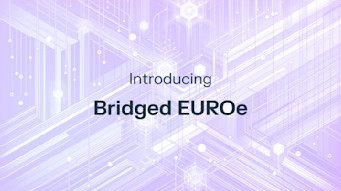
Introducing Bridged EUROe to Scale Euro Liquidity

Membrane Finance Brings the First Stablecoin to Concordium

EUROe To Integrate Concordium – A Permissionless Blockchain with Built-In IDs
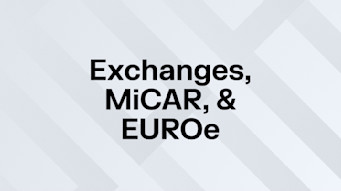
EUROe Helps CASPs & CEXes Stay MiCAR-Compliant

Obligate and Membrane Finance Join Forces to Revolutionise Debt Financing

Membrane Finance Brings the First Euro Stablecoin to Solana – Along With Card Payments
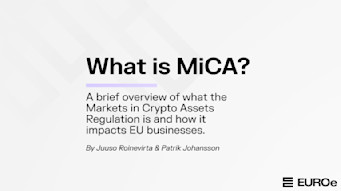
What is MiCA?
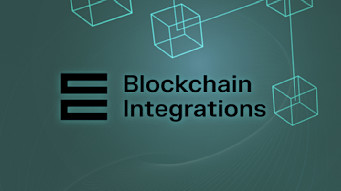
Membrane Finance Announces Blockchain Integration Offering

Mt Pelerin partners with EUROe to offer zero-fees on/off-ramp

EUROe Is Now Available through Woorton’s OTC Infrastructure

Lamar Olive Oil's Innovative On-Chain Bond Issuance Using EUROe

deltaDAO Facilitated a Data Market Transaction Using EUROe

Membrane Finance Launches EUROe Account API to Bridge Traditional and Blockchain-Based Economies

Membrane Finance Launches the First MiCA-Compliant Stablecoin, EUROe, on Avalanche

Membrane Finance and Januar team up to pave the way for MiCA compliant financial technology
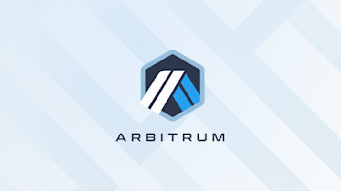
Membrane Finance Launches EUROe on Arbitrum One

Membrane Finance Launches EUROe on Polygon

deltaDAO, Membrane Finance, and Polygon Labs bring EUROe to the Gaia-X Web3 ecosystem as main settlement token

Unlocking the Potential of Tokenisation and Stablecoins: The Next Big Thing in Asset Management

Stablecoin regulation within the EU remains clear amid uncertainties in the US
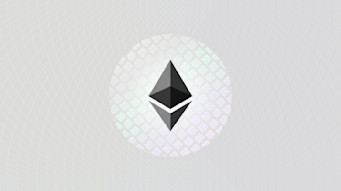
Membrane Finance launches EUROe on Ethereum

Membrane Finance Announces Integration with Fireblocks to Enhance Operational Security of the EUROe Stablecoin

Equilibrium backs Membrane Finance in building core EUROe systems

Membrane Finance appoints KPMG as its internal auditor

Runtime Verification completes a smart contract audit for the first EU-based regulated stablecoin EUROe

Nordic Law acts as a legal advisor to Membrane Finance

Membrane Finance Announces the First Regulated Euro Stablecoin EUROe and Raises a Seed Round
